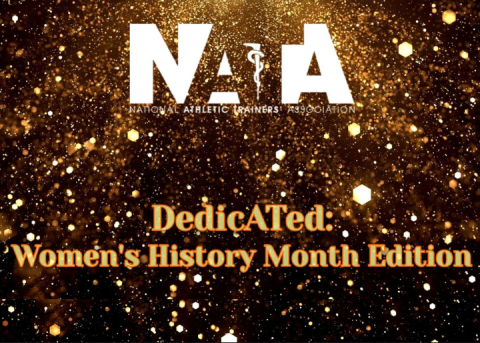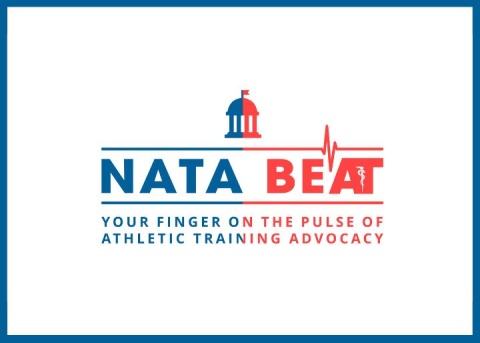
The NATA Hall of Fame is the apex of member recognition, celebrating a select group of athletic trainers who have advanced the profession and exemplified what it means to live a life of service.
More than a jacket, plaque and accolades, the NATA Hall of Fame is an honor bestowed on those who have dedicated countless hours honing their skills, mentoring the next generation of ATs and leaving a lasting legacy in the athletic training profession.
The May NATA News features the class of 2024, highlighting their careers and volunteer achievements, while giving insight into their lives as leaders in the profession.
The class of 2024 will be inducted into the NATA Hall of Fame during the 75th NATA Clinical Symposia & AT Expo in New Orleans.
In this article, the inductees share their hopes for the future of the athletic training profession.
Douglas J. Casa, PhD, ATC, FNAK
California licensure. Does anything else matter? I also hope the profession grows on the international stage so that it is a licensed medical profession in other parts of the world as it is in the United States. Most countries don’t have an equivalent of an athletic trainer in terms of the extensive, six-yearlong education and array of skills that can be utilized like the athletic trainers prepared in the U.S.
Ray Castle, PhD, LAT, NREMT
Athletic training is an incredible profession, and our core strength is our uniqueness. The uniqueness is that, while still misunderstood in some circles, we are a critical component of this country’s health care infrastructure. Just look at where we were five, 10, 15 or 30-plus years ago in job settings. A little over a year ago, we became the profession with millions seeing on TV what we do every single day.
We have to keep pushing for educational programs to continually produce better educated and trained ATs; cultivate pathways for increased member engagement in state, district and national levels; increase employer-supported professional education; foster full reciprocity among state practice acts that provides full scope of practice versus being pigeon-holed to a specific setting or “athletes” only; and raise compensation in all settings reflective of our value to patient care.
Darryl Patrick Conway, MA, AT, ATC
I would hope that the profession continues to grow and lead in the patient care areas that it specializes in. I hope that we continue to work to demonstrate our vast talents across the wide spectrum of what we do and where we work. I hope that we continue to be creative and innovate and don’t settle for “that’s the way we have always done it” clinically and, most importantly, in leadership.
Kimberly S. Peer, EdD, ATC, FNATA
My hope for the future of the profession is that we continue to focus on what makes us unique in this competitive health care arena, while promoting our value. I hope we always value our historical roots and welcome new perspectives as we move toward the future.
Jiro Shikakura, MS, ATC
In the future, I would like to see the services of athletic trainers available to all physically active people, regardless of age, not just competitive athletes!
Craig Alan Voll Jr., PhD, ATC, PT
Two words: CMS recognition! If we, as a profession, want to secure our rightful spot at the health care table, then we need recognition from the Centers for Medicare & Medicaid Services (CMS). However, if we are going to get there, we need to stop the infighting and realize we are stronger when we work together. The only organization that can accomplish this goal is NATA, because NATA is recognized by decision-makers as the organization that represents and speaks on behalf of the athletic training profession. If you don’t believe that the collective work of NATA over the years played a significant role in advancing the profession, then you are being dishonest with yourself. Excellence is an iterative process. NATA is often an easy target because in the here and now, things are not perfect. However, if we really sit back and appreciate the journey we’ve been on, the progress we’ve made as a profession is astounding. Think about it:
- Seventy-five years ago, we were a 100% male profession and now we’re 58% female.
- Fifty years ago, women were not allowed to work with male sports.
- Thirty years ago, it was very common for someone with a mild traumatic brain injury to be allowed to return to a game or practice on the same day.
- Twenty-five years ago, more than 95% of ATs practiced in the “traditional setting.” Now 50% of ATs practice in what we call “emerging settings.”
- Twenty years ago, the use of rectal thermometry to accurately assess and properly treat exertional heat illness was extremely controversial in the profession with many ATs saying they wouldn’t do it.
- Fifteen years ago, conventional wisdom said that professional sports were not an appropriate setting for female ATs to practice.
- Ten years ago, athletic training was a steppingstone profession. Now it is a destination profession.
While compensation still has room for improvement, I have never seen salaries rise at the rate they have the past couple of years with higher salaries, sign-on bonuses, retention bonuses and moving expenses now regularly offered as part of compensation package. With more employment setting options available, athletic trainers’ focus has shifted to concepts of workplace culture, work-life ratio, respect and value and being allowed to work at the top of our skill set and licenses.
While NATA focuses on making the lives of all athletic trainers better, its reputation suffers when the focus is on the lack of perfection. The division results in declining membership which ultimately hinders NATA’s ability to advocate on behalf of the profession for things that really matter (such as CMS recognition). Change is never instantaneous, and the fruits of the labor are never experienced by those who enacted the change, but by those who come behind. Was the Grand Canyon made over night? No, but we who have come after its creation get to revel in its amazing beauty. If we are going to thrive as a profession, we need to realize we must play the long game and NATA is that vehicle.
Cari L. Wood, LAT, ATC
It’s simple: I want the new generation of athletic trainers to be positive and simply enjoy our wonderful profession. Don’t sweat the small stuff. Find a mentor or colleague whom you trust, can vent to and support each other on hard days, instead of using a public platform for negativity. This profession is incredibly rewarding if you don’t get caught up in the little things and look at the big picture. We get to spend time helping quality humans daily. Get to know them. Often, when I’m providing medical care at an event with players and coaches whom I love, or when I have a pleasant interaction with a student or parent, I remind myself that I’m actually getting paid to do this job, and I smile! My hope is that this positive outlook will help the profession continue to grow and gain respect with our patients, other medical providers and stakeholders.





